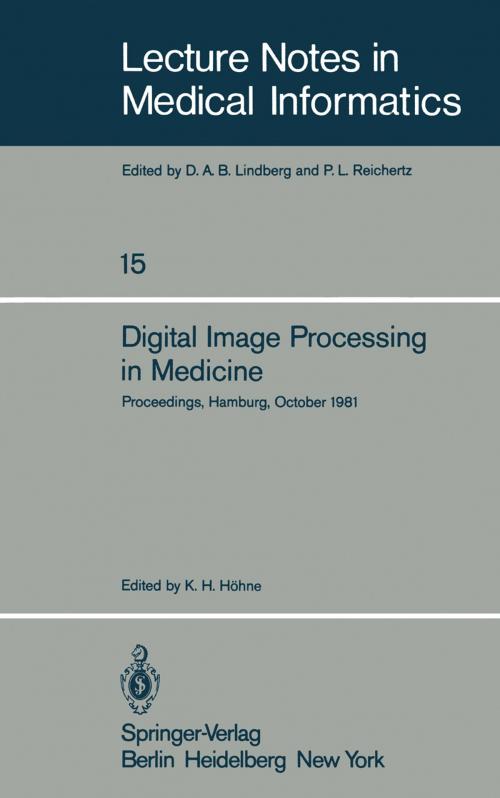Digital Image Processing in Medicine
Proceedings, Hamburg, October 5, 1981
Nonfiction, Health & Well Being, Medical, Reference, Biostatistics, Medical Science, Biochemistry| Author: | ISBN: | 9783642931888 | |
| Publisher: | Springer Berlin Heidelberg | Publication: | March 7, 2013 |
| Imprint: | Springer | Language: | English |
| Author: | |
| ISBN: | 9783642931888 |
| Publisher: | Springer Berlin Heidelberg |
| Publication: | March 7, 2013 |
| Imprint: | Springer |
| Language: | English |
In diagnostic medicine a large part of information about the patient is drawn from data, which, more or less, are represented in an opti calor pictorial form. There is a very wide range of such data as e.g. the patients appearance, the various kinds of radiological images, or cytological imagery. In conventional diagnostics the data, as it comes from the acquisition device, is perceived by the physician and is interpreted with the help of a large amount of "a priori" knowledge to give a diagnostic finding. During the last 15 years a steadily rising number of attempts have been made to support these processes by the application of com puters. The attempts mainly concentrate on three objectives: 1. Support of the perception process by the production of better or new types of images, e.g. by Computer tomography or Computer angio graphy (image processing) . 2. Automation of the interpretation process, e.g. for bloodcell dif ferentiation (pattern recognition) . 3. Management of the steeply rising amount of medical image data in the hospital (image data bases) . Although the early applications of digital methods aimed at the second . . objective, in the last years much more success has been a achieved in the support of the perception process by methods of image process ing. The reason for this is obvious - in the case of automatic interpre tation the a priori knowledge of the physician has to be formalized.
In diagnostic medicine a large part of information about the patient is drawn from data, which, more or less, are represented in an opti calor pictorial form. There is a very wide range of such data as e.g. the patients appearance, the various kinds of radiological images, or cytological imagery. In conventional diagnostics the data, as it comes from the acquisition device, is perceived by the physician and is interpreted with the help of a large amount of "a priori" knowledge to give a diagnostic finding. During the last 15 years a steadily rising number of attempts have been made to support these processes by the application of com puters. The attempts mainly concentrate on three objectives: 1. Support of the perception process by the production of better or new types of images, e.g. by Computer tomography or Computer angio graphy (image processing) . 2. Automation of the interpretation process, e.g. for bloodcell dif ferentiation (pattern recognition) . 3. Management of the steeply rising amount of medical image data in the hospital (image data bases) . Although the early applications of digital methods aimed at the second . . objective, in the last years much more success has been a achieved in the support of the perception process by methods of image process ing. The reason for this is obvious - in the case of automatic interpre tation the a priori knowledge of the physician has to be formalized.















